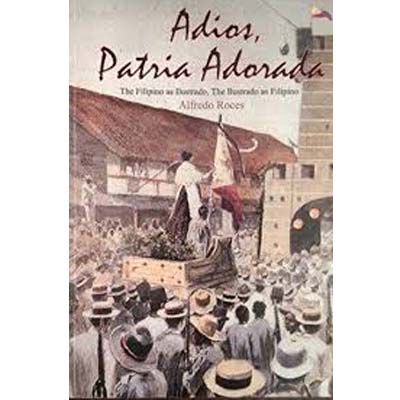Who were afraid of the mestizos?
Answer: The Spanish colonizers during the 19th century.
We are not kidding. Referring again to Alfredo Roces’ Adios Patria Adorada: The Filipino as Ilustrado, the Ilustrado as Filipino, which I cited in the July 4-14, 2017 issue on “The great role of mestizos,” Sinibaldo de Mas in 1842 penned a confidential report to the Spanish monarch on the political situation in the Philippines.
His report consisted of three volumes. Only two volumes, titled “Report on the condition of the Philippines, 1842,” were for public consumption. The third volume, in which he devoted 68 pages to the problems with the mestizos and indios, was a confidential report, under the heading “interior politics.” The few copies were “eye’s only” and circulated within the court among the Queen Regent’s ministers and select high-ranking officials.
In the confidential report, “De Mas underscored the rise of the hijos del pais (mestizos included) as the major obstacle to whatever ambition Spain harbored to keep the Philippines as a permanent colony. To keep the colony shackled to Spain, therefore, he advised that the number of hijos del pais be “severely reduced…” (p. 14).
De Mas even advised: “It will be necessary for reasons of policy to prohibit the marriage of European Spaniards to the Indios or Chinese mestizos. Thus, the Spaniards will contract marriage only with the whites of the islands who gradually will return to Spain with them, thus ceasing to be innocent instruments for creating insurgents…” (p. 14).
De Mas warned in his report, “It is easy to see that the government in the Philippines in the very near future will be in the hands of the indios or perhaps of the Chinese mestizos or of the two mixed races; and the whites subject to the colored…” (p. 15).
To stop the population explosion among the mestizos, he advised “prohibiting intermarriage among the races.” (p. 15).
De Mas further recommended that all male Spaniards in the colony upon reaching 16 years of age be sent off to Spain, calculating that after only 16 years, “there will be no more children to transport.” (p. 16)
History had proven De Mas was right in his warning and observation that the government in the very near future would be in the hands of the indios or perhaps of the Chinese mestizos or of the two mixed races.
Fifty-six years after De Mas wrote the report, the Philippines gained her independence from Spain through a propaganda movement and revolution both led by the ilustrados composed mostly of mestizos, with Chinese mestizos in much greater number. They played a great role not only in the struggle for Philippine independence but in the formation of Filipino nation as well.
As Roces stated in his book The 19th century, the Era of the Ilustrados – inventors of the Filipino National Identity, “The 19th century in Filipinas was the century of the mestizo.” (p.35)
Mabuhay ang mestizos!
Categories
Afraid of mestizos
